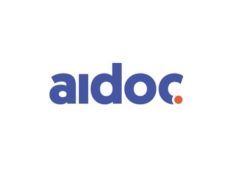
Veryan Medical has confirmed the release of MIMICS-3D EU three-year results by the study principal investigator Michael Lichtenberg (Vascular Center Arnsberg, Klinikum Hochsauerland, Arnsberg, Germany) at this year’s International Symposium on Endovascular Therapy (ISET 2022; 16–19 January, Hollywood, USA).
MIMICS-3D EU is a prospective, multicentre, observational registry to evaluate the BioMimics 3D vascular stent system. The study evaluated safety, effectiveness and device performance within a real-world clinical population of 507 patients enrolled in 23 pan-European sites.
The mean age of enrolled patients was 70 years; 66% were male and 37% were diabetic. Rutherford 0–1, 2–4 and 5–6 were 1%, 82% and 17%, respectively. Mean lesion length was 126mm and 57% of lesions were occlusions. Lesion calcification according to PACSS (Rocha-Singh KJ et al, 2014) was Grade #0—18%; #1—30%; #2—24%; #3—15%; #4—14%. BioMimics 3D placement followed atherectomy in 8% of lesions. Drug-coated balloons (DCB) were combined with BioMimics 3D in 50% of lesions treated.
Technical success for the BioMimics 3D implant procedure as assessed by the operator was 99%, Veryan Medical reports. An independent clinical events committee adjudicated major adverse events (MAE) including death and potential device-related events. The primary safety endpoint was a composite of MAE, comprising death, major index-limb amputation or clinically-driven target lesion revascularisation (CD-TLR) through 30 days. The primary outcome measure for effectiveness is freedom from CD-TLR through 12 months.
A press release details that the Kaplan Meier (KM) estimate of freedom from CD-TLR at one year, two years and three years in the intention-to-treat (ITT) population was 90%, 82% and 78%, respectively. The KM estimate of freedom from loss of primary stent patency (PSVR >2.4) through three years in the ITT population was 71%. There were 4/676 (0.6%) site-reported stent fractures
Lichtenberg commented: “I have been using BioMimics in my daily clinical practice for seven years and it is my ‘go to’ stent for a number of different indications, including long lesions, calcified lesions and lesions located in the distal SFA [superficial femoral artery] and proximal popliteal. I was delighted to be the principal investigator for the MIMICS-3D study and am pleased that the results further validate earlier results from the MIMICS clinical programme, the combined database of which provides significant validation of the clinical benefits of swirling flow.”
Nick Yeo, Veryan’s CEO noted: “I would like to thank Dr Lichtenberg for his significant contribution to the successful running of the MIMICS-3D study, providing invaluable leadership and guidance throughout. I would also like to thank all the other investigators and study coordinators who contributed to the success of the study, and particularly for being so rigorous about the quality of data collected, which is unusual for a typical registry of this type. CD-TLR and patency outcomes in the MIMICS-3D EU study are consistent with those of earlier MIMICS studies and are achieved in longer, more complex lesions. We are excited that these investigations into the postmarket performance of BioMimics 3D support the hypothesis that imparting non-planar curvature onto the femoropopliteal arteries to promote swirling blood flow and increase wall shear stress, results in clinical outcomes that are comparable to those of drug-coated and drug-eluting devices.”










